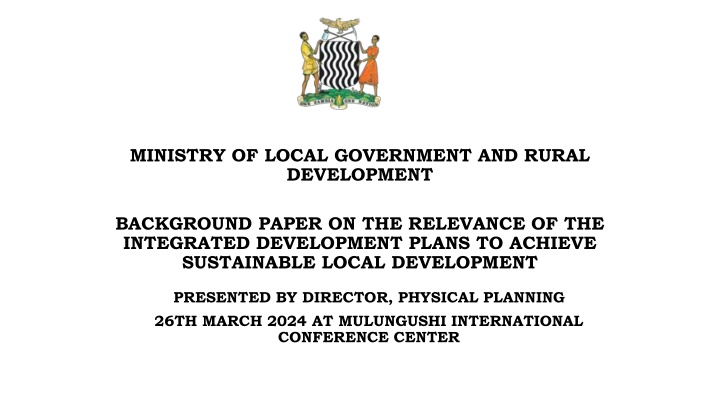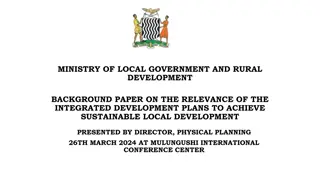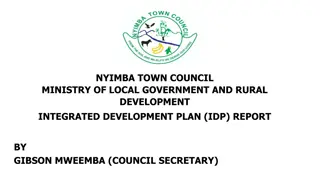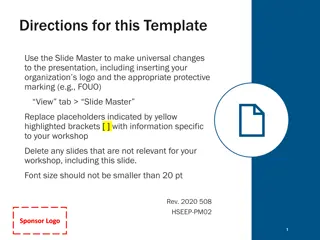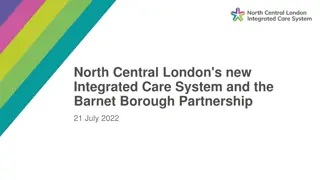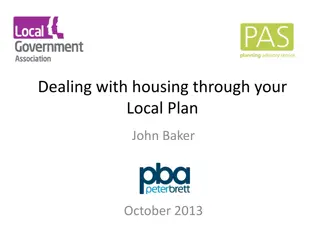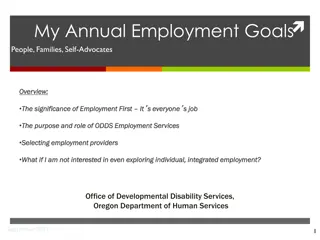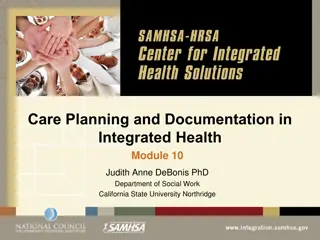Enhancing Local Development Through Integrated Planning: A Critical Analysis
The background paper explores the relevance of integrated development plans for achieving sustainable local development in Zambia. It highlights weaknesses in national development plans, development coordinating committees at provincial and district levels, and district-level spatial plans. The introduction emphasizes the absence of comprehensive district-level plans to guide development and the shift towards decentralized planning since 1995. The document discusses the challenges faced in spatial planning and the enactment of the Urban and Regional Planning Act in 2015. It concludes by stressing the importance of integrated development planning for fostering sustainable local development.
Download Presentation

Please find below an Image/Link to download the presentation.
The content on the website is provided AS IS for your information and personal use only. It may not be sold, licensed, or shared on other websites without obtaining consent from the author.If you encounter any issues during the download, it is possible that the publisher has removed the file from their server.
You are allowed to download the files provided on this website for personal or commercial use, subject to the condition that they are used lawfully. All files are the property of their respective owners.
The content on the website is provided AS IS for your information and personal use only. It may not be sold, licensed, or shared on other websites without obtaining consent from the author.
E N D
Presentation Transcript
MINISTRY OF LOCAL GOVERNMENT AND RURAL DEVELOPMENT BACKGROUND PAPER ON THE RELEVANCE OF THE INTEGRATED DEVELOPMENT PLANS TO ACHIEVE SUSTAINABLE LOCAL DEVELOPMENT PRESENTED BY DIRECTOR, PHYSICAL PLANNING 26TH MARCH 2024 AT MULUNGUSHI INTERNATIONAL CONFERENCE CENTER
OUTLINE INTRODUCTION Weaknesses of the National Development Plans Weaknesses of Development Coordinating Committees at Provincial and District Level Weaknesses of district level Spatial Plans prior to 2015 Urban and Regional Planning Act enactment The Integrated Development Plan Conclusion
INTRODUCTION Since development planning (both socio-economic and spatial planning) commenced in the 1960s in Zambia, there has been no legally backed comprehensive plan at district level to guide on-going and future developments. Highly centralized top down planning has been prominent until recently. Long term Socio economic planning has over years been emphasized at national level through five-year National Development Plans without corresponding emphasis on lower level development plans. However, since 1995 through circular No. 1, which established development coordinating committees Government has emphasized development coordination at all levels from national to district through established Development Coordinating Committees.
INTRODUCTION CONT While the National Development Coordinating Committee has had a National Development Plan to refer to in their meetings, PDCC and DDCC did not have such a document to refer to. On the other hand, spatial planning has been highly centralized until 2015 when the Urban and Regional Planning Act was enacted. The preparation of Structure plan (district plan for council controlled area) and Local Development Plan (plan for sub district level) was through Statutory orders by the Minister. Under the Urban and Regional Planning Act the decision to prepare a development plan is made by the local authority.
Weaknesses of the National Development Plans: Lacking spatial dimension i.e. the location of programmes and projects not known. In such circumstances it is difficult to predict the impact of the project whether positive or negative Some sectors were not adequately covered Non-involvement of some key players at lower levels in the formulation of the plan resulted in some projects / programmes outlined in the plan being frustrated at implementation stage.
Weaknesses of Development Coordinating Committees at Provincial and District Level. Operating without an approved development plan to refer to. Without a document to refer to, it is difficult for members of the coordinating committee to make any member accountable for failure to perform. It is equally difficult to assign performance indicators for each institution without a development plan in place. Lacking legal backing until recently
Weaknesses of district level Spatial Plans prior to 2015 Urban and Regional Planning Act enactment. Limited coverage i.e. Council controlled area excluding customary areas. It was the Minister only who had power to order the preparation of a development plan. Limited consultations during the preparation stage by consultants who used to prepare the plan It was viewed as a local authority document
The Integrated Development Plan The IDP is the answer to most of the weaknesses identified above because of the following reasons; An IDP covers all the 4 Strategic Development areas outlined in the 8th National Development Plan namely; Economic transformation and job creation Human and Social Development Environmental sustainability Good Governance Environment An IDP also covers sectoral policies, and major programmes
The Integrated Development Plan CONT An IDP integrates socio economic, environmental and spatial planning. This enhances orderliness, coordination, and sustainability in the development of the district. It is legally backed, hence it is easy to handle legal challenges during its implementation. An IDP covers all the sectors operating in the district. This provides an opportunity for enhancing horizontal coordination and sustainability of development.
The Integrated Development Plan CONT Consultation and participation of various stakeholders in the district during the preparation of an IDP ensures that the development priorities and strategies reflect the needs and aspirations of the local people leading to more inclusive and sustainable outcomes. An IDP is a long term plan hence, helps to address challenges of sustainable development, such as balancing economic growth with environmental protection and social equity.
The Integrated Development Plan CONT An IDP resource allocation is based on prioritized local needs and goals resulting in effective utilization of limited resources An IDP provides mechanisms for monitoring progress and evaluating the impact of development interventions. This allows local authorities to track the implementation of the plan, identify any challenges and make adjustments as necessary to ensure that development goals are achieved sustainably.
The Integrated Development Plan CONT Local authorities operate in a constantly changing environment and the IDP is reviewed every 5 years to make sure it stays abreast with the latest changes and priorities set by the sitting government through National Development Plan. It does not only determine the status of the identified projects for the previous 5 years, but also whether the remaining projects are still relevant and a priority. After every local government election, the new council has to decide on the future of the IDP. The council can adopt the existing IDP or review the IDP to take into account the prevailing plans. An IDP sets a framework for how land should be used, what infrastructure and services are needed and how the environment should be protected.
Conclusion The IDP is relevant at district level because it is comprehensive covering all the Strategic Development Areas outlined in the 8th National Development Plan, it is the document that all ministries and spending agencies are advised to refer to during budget preparations. The IDP caters for all line departments, local authority and other spending agencies at district level. During preparation of an IDP, consultations take place even at sub district level, implying the document takes care of the community needs adequately.
